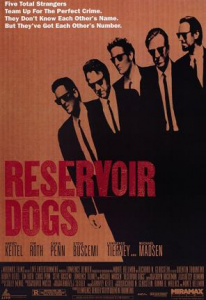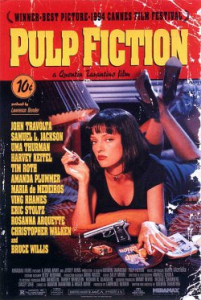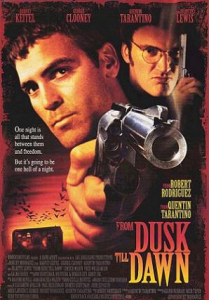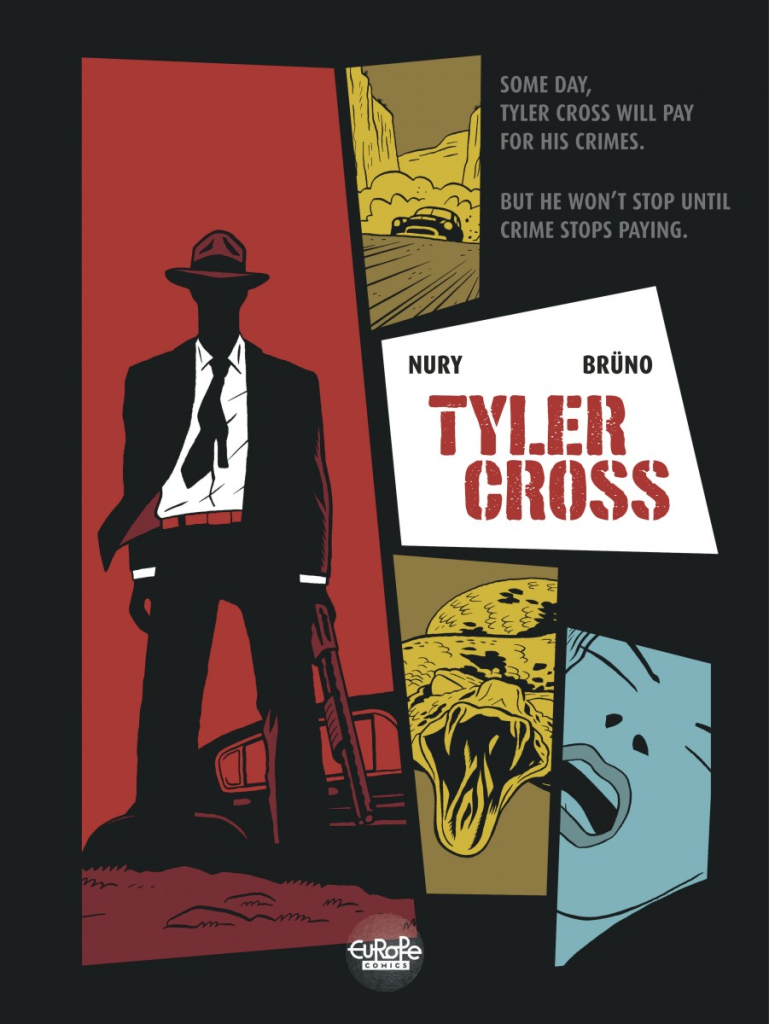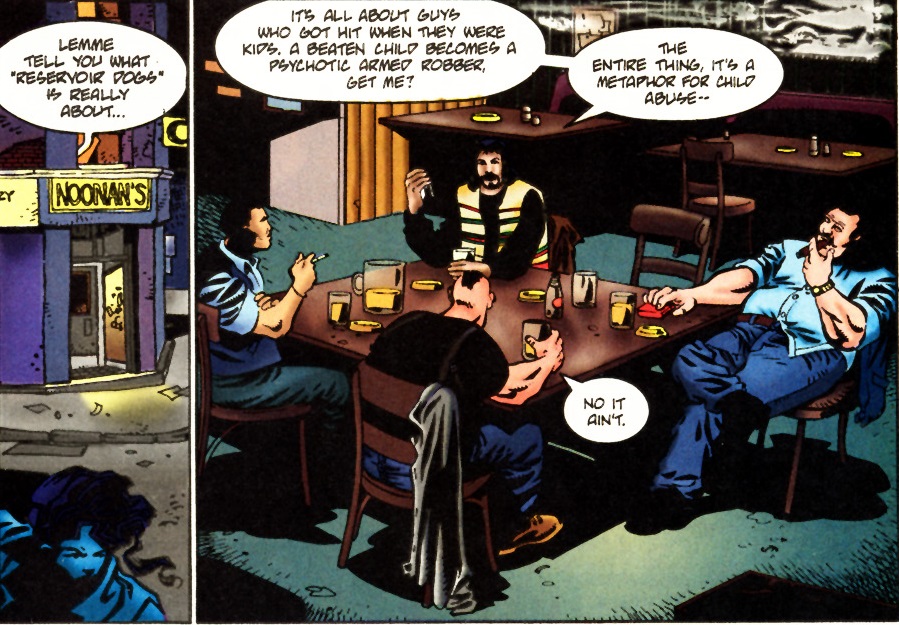 Hitman #1
Hitman #1
It makes sense that Garth Ennis chose to put this amusing riff on Reservoir Dogs’ opening lines in the very first issue of Hitman. Ennis shares with Quentin Tarantino a penchant for dark humor, graphic dismemberment, and lengthy stretches of profanity-laden dialogue, often set around some kind of bar table, with characters having a drink while chit-chatting about pop culture, everyday problems, and/or the meaning of life.
It’s also an instance of Ennis proudly displaying his influences. This is another thing he has in common with Tarantino, who is happy to pillage film history and turn it into a hip mix-tape. So you can geek out if you spot that the leg torture scene in Inglourious Basterds is a nod to the WWII men-on-a-mission classic The Guns of Navarone, or that the image of Jamie Foxx hanging upside down near the end of Django Unchained recalls a shot of Woody Strode in another powerful slave revenge movie, Spartacus. Fortunately, these moments work regardless of whether or not viewers recognize the references – they’re Easter Eggs, not the main course.
That said, Garth Ennis is hardly the only creator to do comics whose style and motifs overlap with Quentin Tarantino’s. With that in mind, Gotham Calling is celebrating The Hateful Eight’s release with a list of comic suggestions for fans of Tarantino movies!
Let’s start with Reservoir Dogs, which introduced the director’s distinctive authorial voice while also channeling both classic Hollywood heist movies (like Phil Karlson’s Kansas City Confidential) and their stylish European cousins (like Jean-Pierre Melville’s Le Doulos). Despite the high levels of testosterone oozing from the all-male cast, for the most part Tarantino’s film debut doesn’t go for macho action. Instead, this story of a gang of thieves trying to figure out what went wrong in their latest job feels more like a gritty psychological drama, or a particularly bloody chamber play. It’s Glengarry Glen Ross with guns.
Fans of Reservoir Dogs should obviously check out Darwyn Cooke’s Parker series, which adapts the hardboiled novels written by Richard Stark. Like the film, these comics take place in a world of career criminals where all the tough guy bonding inevitably ends up in violent post-heist fallouts. Four installments have been published so far: ‘The Hunter,’ ‘The Outfit,’ ‘The Score,’ and ‘Slayground’ – and they’re not just great because of Cooke’s knack for noirish atmosphere, but because of the many inventive ways he has found to convey information on the page (like the clever use of maps and infographics).
In addition, I highly recommend Tyler Cross. Also set in the 1960s and starring a ruthless professional robber, this is Eurocomics’ answer to Parker – and what a kickass, mean bastard of an answer it is! Written by Fabien Nury (whose WWII caper Comment Faire Fortune en Juin 40 is obligatory reading for fans of Inglourious Basterds), the series has a sleekly cinematic mise-en-scène, brought to the page by artist Brüno and colorist Laurence Croix. The first self-contained volume has already come out in English, but if you read French, don’t wait around before getting your hands on the second one – the Cool Hand Luke-ish ‘Angola,’ in which the protagonist is sentenced to the titular southern prison.
Quentin Tarantino’s earliest scripts ended up in the hands of very different directors. Oliver Stone fully appropriated and transformed the screenplay for Natural Born Killers, turning it into a horrible psycho remake of Bonnie and Clyde as if recalled during a bad trip of LSD. By contrast, Tony Scott stayed close to the original script in True Romance – and while Scott didn’t favor Tarantino’s angular compositions and extended takes, at least he was not afraid to let the cast savor their talky scenes without resorting to ADHD editing. The latter movie makes a better job of capturing the kick of an adolescent fantasy where young lovers go on a crime spree and soon find themselves way in over their heads (with the bittersweet score poignantly paying tribute to Terrence Malick’s Badlands). One of the main characters even works at a comic book shop!
Nick Spencer totally nails this feel in the demented Forgetless, a viciously funny mini-series with lively, if inconsistent, art by Scott Forbes, Marley Zarcone, Jorge Coelho, and Erik Skillman. Although replacing the Gen X vibe with a millennial infatuation with social media and snappy hipster sarcasm, Forgetless is still at its core an edgy tale about young criminals, overflowing with sex and murder (both of which eventually involve a dude in a koala suit).
Some of those themes also show up, with a much more melancholy tone, in Manhattan Beach 1957, where the protagonist (just like his counterpart in True Romance) finds inspiration by talking to the spirit of Elvis Presley. This is a gorgeous book illustrated by veteran Belgian artist Hermann Huppen, who uses contrasting watercolors to great allegorical effect. Dark Horse recently collected it in Trilogy USA, together with two other albums drawn by Hermann and likewise written by his son Yves H., namely the Edward Hopper-looking horror noir Blood Ties and the ridiculously wordy The Girl from Ipanema. For all the hyper-realism of Hermann’s art, however, these comics are actually set in a distorted version of America-as-imagined-by-Europeans, so you can look at them as either a clichéd caricature of reality or as a transcendental conjuration of cinematic and literary images… just like Tarantino’s work.
Before 1994, there had been plenty of badass crime flicks with laugh-out-loud scenes (including Tarantino’s own Reservoir Dogs), but Pulp Fiction tapped into a sweet spot between gangster movie and twisted comedy, with its philosophical hit men, its ill-fated mob boss, its sword-wielding boxer on the run, its climatic Mexican standoff, and its unforgettable monologue about a long-traveled watch. Add to this a retro soundtrack and non-linear chronology, and you’ve got yourself one postmodern masterpiece which went on to inspire countless imitators, many of which quite enjoyable in their own right (like Doug Liman’s Go and Guy Ritchie’s Snatch).
If you’re searching for a similar balancing act in comics, there are worse places to look for it than in Stray Bullets, whose pages are full of eccentric characters and virtuoso narrative twists… After an eight-year hiatus, David Lapham finally returned to his brilliant creation with the mini-series ‘Killers,’ which was as sharp and gutsy as ever. And the latest mini, ‘Sunshine & Roses,’ continues to expand this sprawling saga of kinky grown-ups and reckless teenagers, smoothly encompassing crabs-related hijinks, biting character moments, and bursts of horrific violence featuring a harpoon. Cool beans.
Despite his Disney-ish cartoony linework, one creator who is particularly skilled at a not-too-distant type of underworld farce is Kyle Baker. He did the very witty graphic novels You Are Here and I Die at Midnight. Compared to other books on this post, however, these are much less enamored with Pulp Fiction:
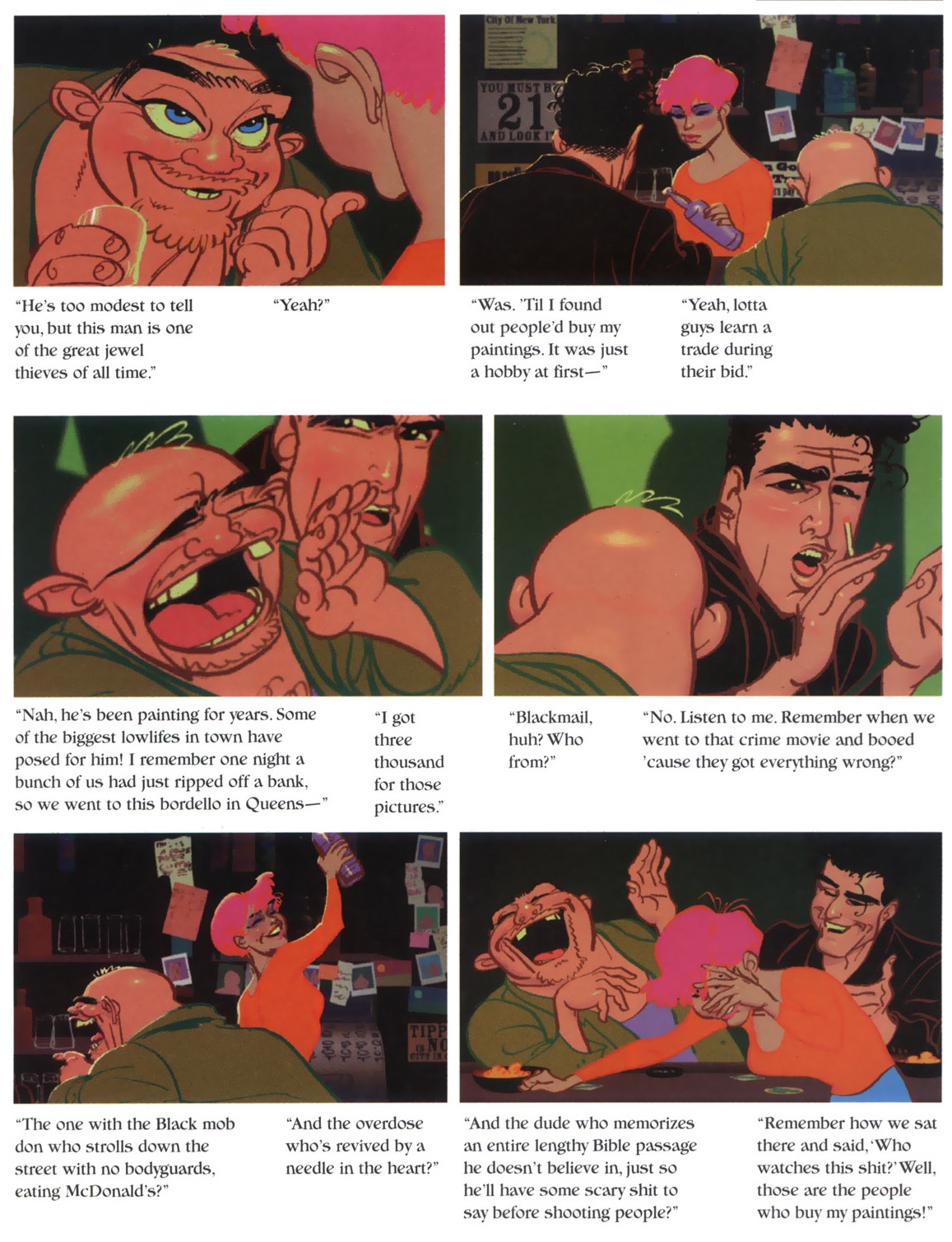 You Are Here
You Are Here
Just when you think you’ve got From Dusk Till Dawn pegged as one hell of a sleazy thriller, it suddenly shifts into one hell of a vampire monster massacre extravaganza – it’s like someone replaced the last reel of Bring Me the Head of Alfredo Garcia with footage from Evil Dead II! This grotesquely entertaining genre mash-up was directed by Robert Rodriguez, but the script bears Quentin Tarantino’s indisputable mark – and he plays the psychopathic Richie Gecko – so I’m including something for fans of it as well. (In any case, it’s widely accepted that these two filmmakers share a cinematic universe.)
As far as vampire-themed comics go, it’s hard to find a more pitch-black comedy than David Lapham’s 30 Days ‘Til Death. This mini-series focuses on a vampire in Buffalo who obsessively tries to keep a low-profile and sees the shit hit the fan in a diabolical crescendo when some unhinged friends drop by (it’s also by far the best spin-off of the otherwise relatively serious 30 Days of Night series). Besides vampires, Lapham has also put his twist on werewolves through the ultra-gory, brutally sexual ongoing Ferals, with art by Gabriel Andrade. Yet Ferals is basically one overlong, grim, disturbing story – and decidedly less fun. Honestly, if you’re just in the mood for straight-up horror, you may as well get your hands on Outcast (the comic series by Robert Kirkman and Paul Azaceta, not the preposterous movie with Nicolas Cage).
One comic whose mood and aesthetics are quite close to From Dusk Till Dawn is Garth Ennis’ and Steve Dillon’s Preacher. Although overrated, their magnum opus still resonates as both an iconoclastic ‘fuck you’ to religion and a heartfelt meditation on American identity. While the TV series is on the way, you can already get a sense of how this comic might feel on-screen if you watch a double-bill of Kevin Smith’s Dogma and, yes, From Dusk Till Dawn. Like the latter, Preacher is an often hilarious Texas-set adventure that features vampires and revolves around an ass-kicking priest going through a crisis of faith. I’m not saying this happened because of the Rodriguez/Tarantino 1996 collaboration – in fact, the comic debuted a year before the film was released. What the synchronicity does reflect is the authors’ common sensibilities, which are evident throughout Preacher, even if the hero gets his pep talks from the spirit of John Wayne instead of Elvis. Indeed, the initial pages kick off with a completely tarantinoesque set piece:

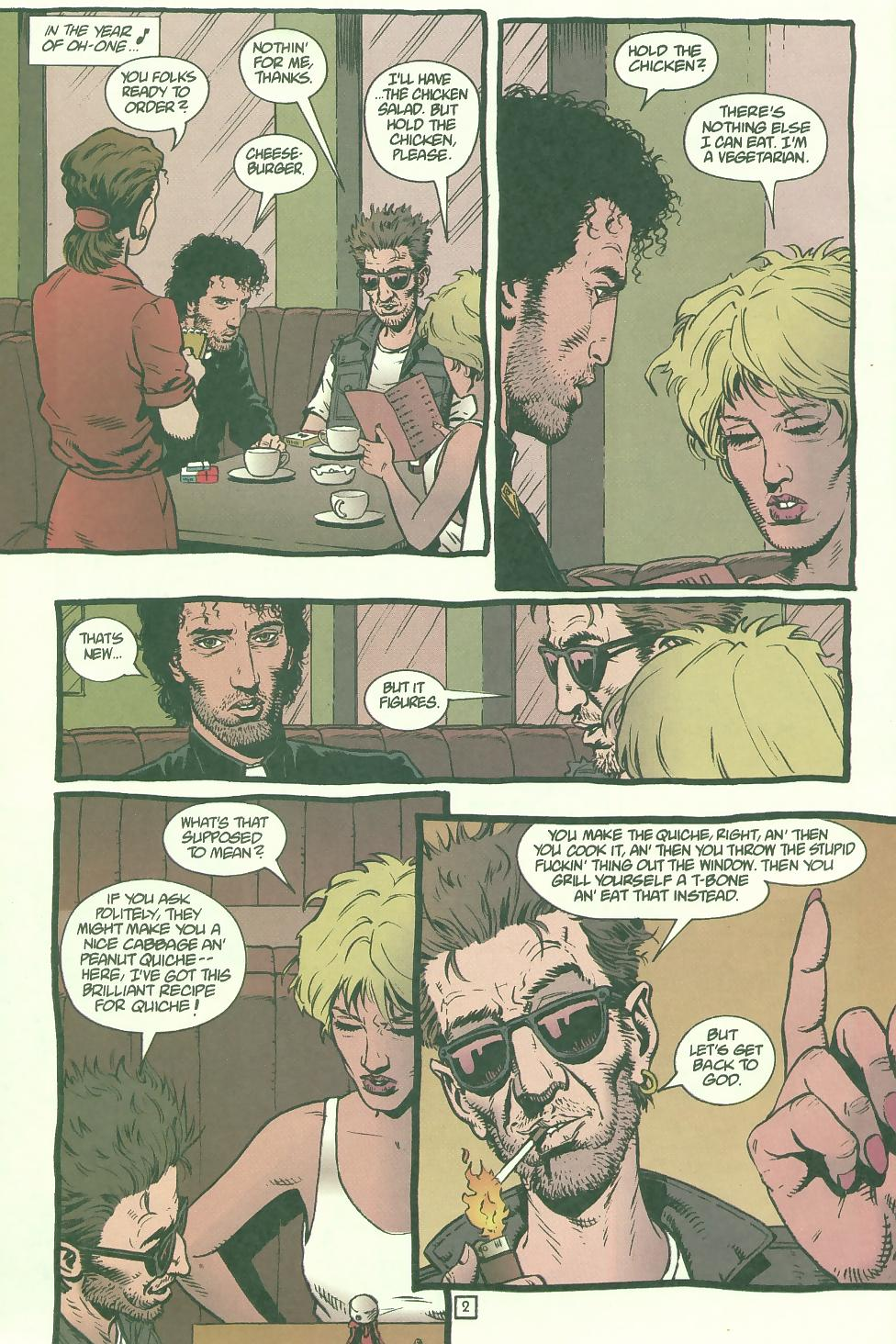 Preacher #1
Preacher #1
Jackie Brown is a tricky one since at first glance it looks like just another cleverly told crime story with crackling dialogue. Yet this adaptation of Elmore Leonard’s Rum Punch is more ‘mature’ than Tarantino’s earlier stuff in the sense that it’s more leisurely paced and more focused on worn-down characters. Organically embedded in the film’s post-blaxploitation web of smuggling and double-crosses is a terrifically acted drama about aging, not to mention a surprisingly touching romance. Even the obligatory inclusion of racial themes and intertextual winks at older movies via casting and soundtrack is not as showy compared to the rest of the director’s oeuvre, both before and after.
For all these reasons, Jackie Brown brings to mind some of Ed Brubaker’s work, whether it’s Scene of the Crime, the murder mystery he did with Michael Lark, or Criminal, his and Sean Phillip’s much-admired meditation on the crime genre. (By the way, how sweet was that special issue of Criminal they released last year, alternating between a prison story and excerpts from a Conan-like comic the characters were reading?)
Or you can always dig into Brian Michael Bendis’ excellent pre-Marvel noir phase, especially the graphic novels Jinx and Goldfish, in which the Tarantino DNA is particularly striking. Not only does Jinx have in common with Jackie Brown a labyrinthine plot and a strong female protagonist, but a lot of the book features page after page of people having cool conversations, including this one about Batman:
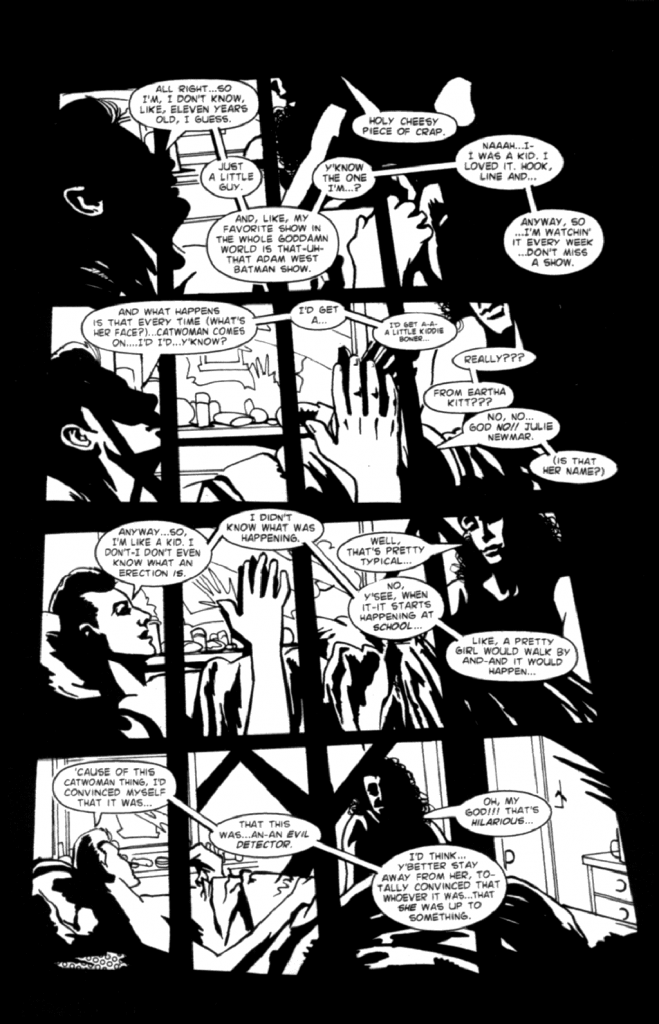 Jinx
Jinx
NEXT: More Tarantino.

